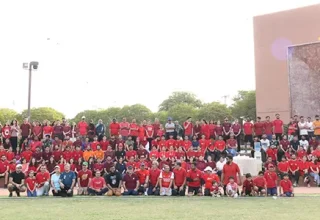Keeping track of everything you eat in a day is harder and harder to maintain over time. Unfortunately, a recent study shows that diligent tracking is an essential ingredient for effective weight loss. Research results published in Obesity show that perfect tracking is not necessary for significant weight loss. Users of a commercial digital weight loss program who self-reported their food intake were followed for six months by researchers at UConn, the University of Florida and the University of Pennsylvania.
The aim of the study was to determine ideal diet tracking levels to predict 3%, 5% and 10% weight loss after six months. “We partnered with WeightWatchers, who were planning to release a new personal points program, and they wanted to get empirical data through our clinical trials,” said co-author and associate professor of allied health sciences Sherry Pagoto.
Pagoto explained that the new program takes a personalized approach to allocating points, including a list of zero-point foods to eliminate the need to count calories for everything. “Dietary tracking is the cornerstone of all weight loss interventions, and tends to be the biggest predictor of results. This program reduces that workload by allowing for zero-point meals, which don’t need to be tracked.”
Before their tracking gradually dropped to just one day per week at the four-month mark. They still lost about 5% of their weight.
A third group, known as low trackers, started tracking just three days a week and dropped to zero within three months, where they remained for the remainder of the intervention. On average this group lost only 2% of their weight.
“One of the things that’s interesting about this data is that, often in the literature, researchers only look at whether there’s a relationship between tracking and overall weight loss results. Ran took a data science approach to the data and found that there’s more to the story,” Pagoto said. “Now we’re seeing different patterns of tracking. This will help us identify when to provide additional support and who needs it most.”
The patterns can help inform future programs that can be developed to help improve user tracking based on which groups users fall into. Future studies will dig deeper into these patterns to understand why they emerge and hopefully develop interventions to improve outcomes.
“For me, the exciting thing about these digital programs is that our participants’ behavior has a digital footprint,” Xu said.
“We can drill down into the nitty-gritty of what people do during these programs. The data can inform precision medicine approaches, where we can take this data science perspective, identify patterns of behavior and design a targeted approach.”
Digitally distributed health programs give researchers a wealth of data they never had before that can provide new insights, but this science requires a multidisciplinary approach.
“Before, it felt like we were flying in the dark or just going with anecdotal or self-reported measures, but it’s different now that we have so much user data. We need data science to make sense of all that data. This is where team science is so important because clinical and Data scientists think about the problem from very different perspectives, but together, we can create insights that none of us could do on our own. This must be the future of this work,” says Pagoto.
Xu agrees: “From a data science perspective, machine learning is exciting but if we only have machine learning, then we only know what people do, but we don’t know why or what to do with this information. This is where we need clinical scientists to understand these findings. Like Sherry for. That’s why team science is so important.”



































